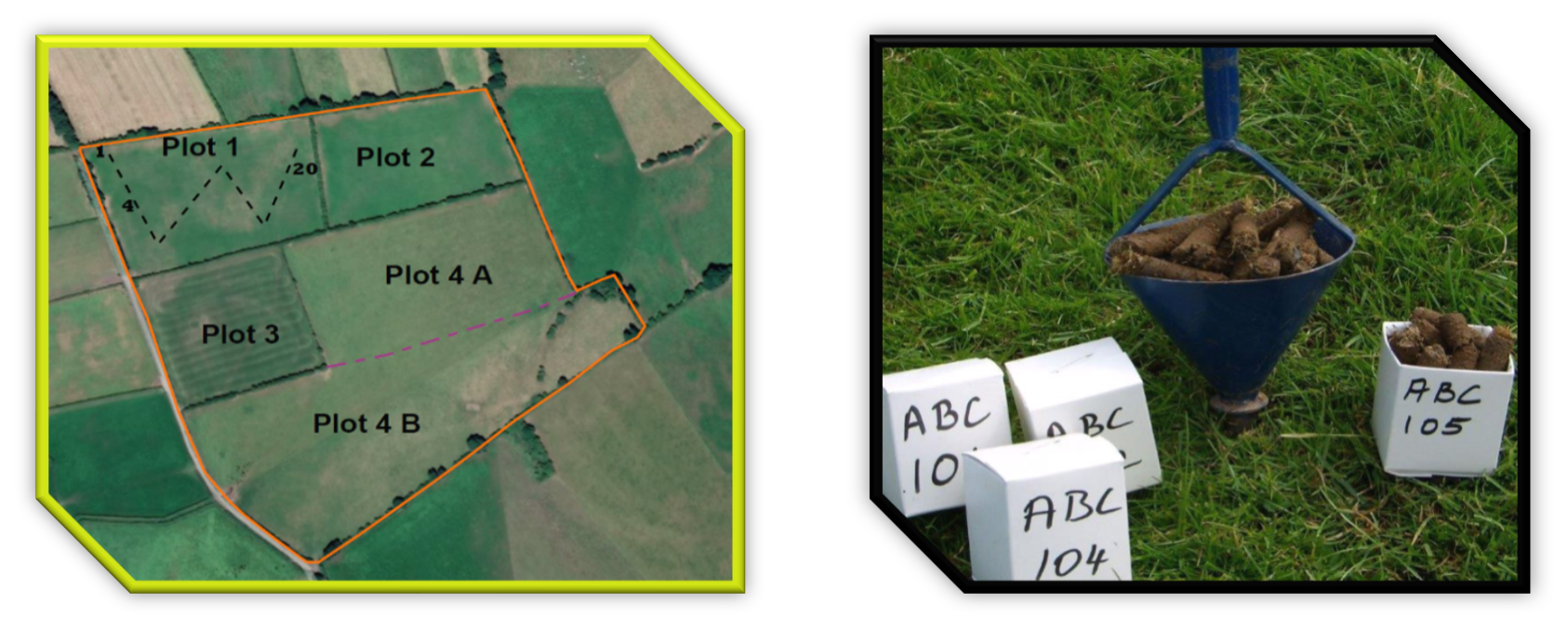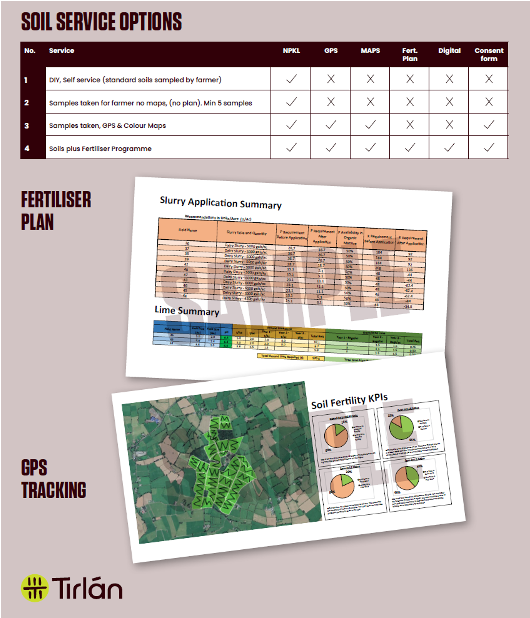Soil Sampling 2023 – Technical Update

Results from soil testing provide the farmer with vital information to base their lime, fertiliser and manure application. This highlights areas of land that require extra fertiliser and soils that need increased pH levels to maximise nutrient uptake by the crop.
Soil Sampling Under the Nitrates Action Programme
- As per the DAFM 5th Nitrates Action Programme, ALL farmers above 130 kg N/ha must take soil samples from 1st January 2023. Where soil samples have yet to be taken, a P Index 4 will be assumed.
- All arable land sown from 1st January 2023 must have soil samples taken. A P Index 4 will be assumed until a soil sample is taken.
Steps when taking a soil sample
- The ideal time to take soil samples is between October and February, waiting 3 - 6 months after P & K application (chemical & organic) to allow actuate analysis of the soil samples (N or S fertiliser application does not affect soil sample results).
- Ideally, leave a two-year gap after a lime application to get an accurate picture of the soil’s pH.
- Soil sample an area of 2-4 ha where soil type and cropping of lands were similar for the past 5 years. Separate samples should be taken where soil type, slope, crop history or drainage difference from the rest of the land area.
- Take approximately 20-25 core samples in a ‘W’ shape pattern throughout the field, making sure to go the full depth of 10cm using a soil core sampler. Avoid sampling around ditches, drinking or feeding points, dung or urine patches and gateways.
- Make sure to record each soil sample by marking both a prepared map and soil sample container with the sample number and field name.
- Soil sampling ideally should be conducted every 3-5 years and is required every 4 years for farmers in derogation (>170kg Kg N/ha).

We can see an ever-growing push to increase on-farm action to improve environmental activity. This can be seen with the latest Climate Action Plan published by the DAFM, which outlines the need to reduce nitrogen-based fertiliser application by 20% by 2030. This reduction in fertiliser will lower the greenhouse gas emissions from Irish agriculture while also improving farm profitability through increased nitrogen use efficiency by improving soil health and fertility on farms.
Tirlán offers a soil nutrition programme to help meet these soil sampling requirements and provides the tools farmers need to restore and build soil health.
This programme will create a detailed, visual and practical nutrient management plan (NMP) based on the latest soil results taken on your farm. Using the tailored information from the NMP can support better on-farm decision-making from lime requirements to maximising slurry application as a cheaper and effective form of fertiliser. This programme will also focus on best environmental practices when providing any product recommendations.
Some of the key features of this programme include a tailored fertiliser plan and soil reports, a farm yard manure plan, field mapping with GPS tracking and a lime requirement plan. All soil reports can also be viewed online by registering and linking your account on www.tirlanfarmlife.com.
Talk to your business manager or call the Customer Service Centre for further queries in relation to the Soil Nutrition Programme.
Click HERE to download the soil nutrition programme application form.
First Published 23 January 2023
